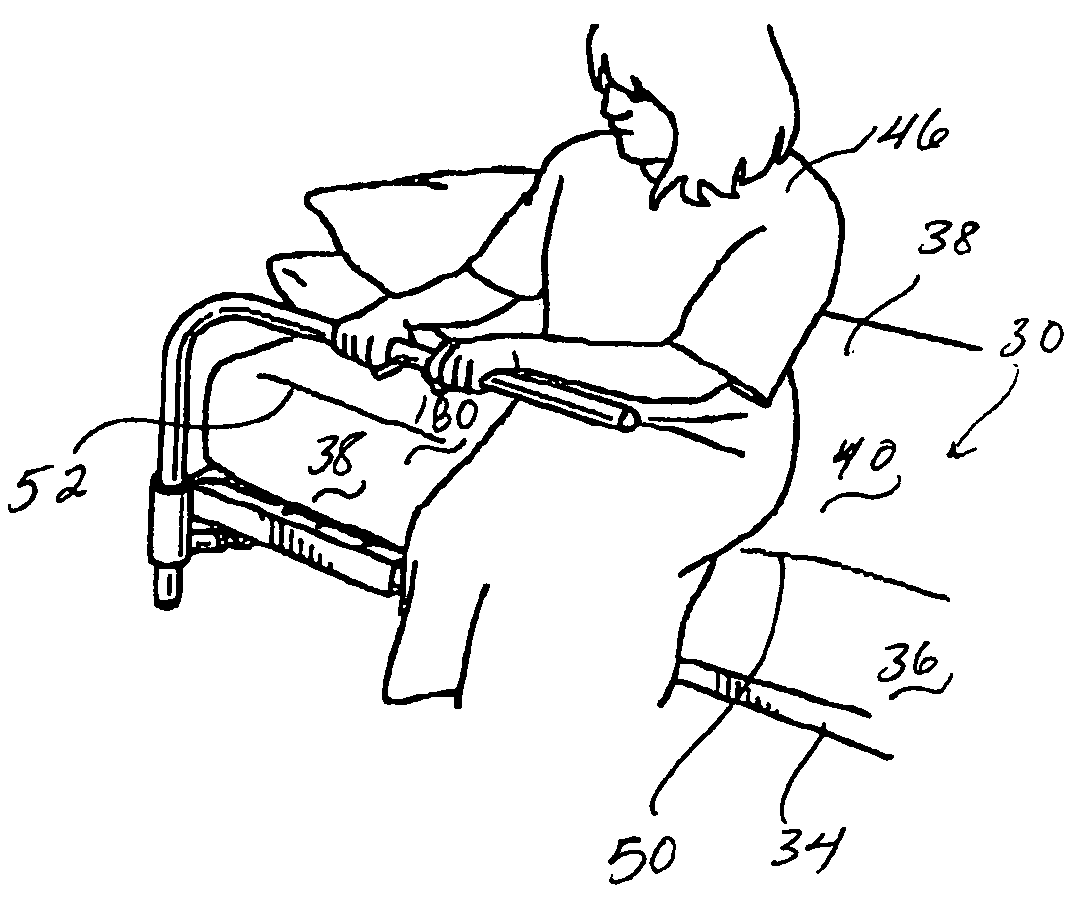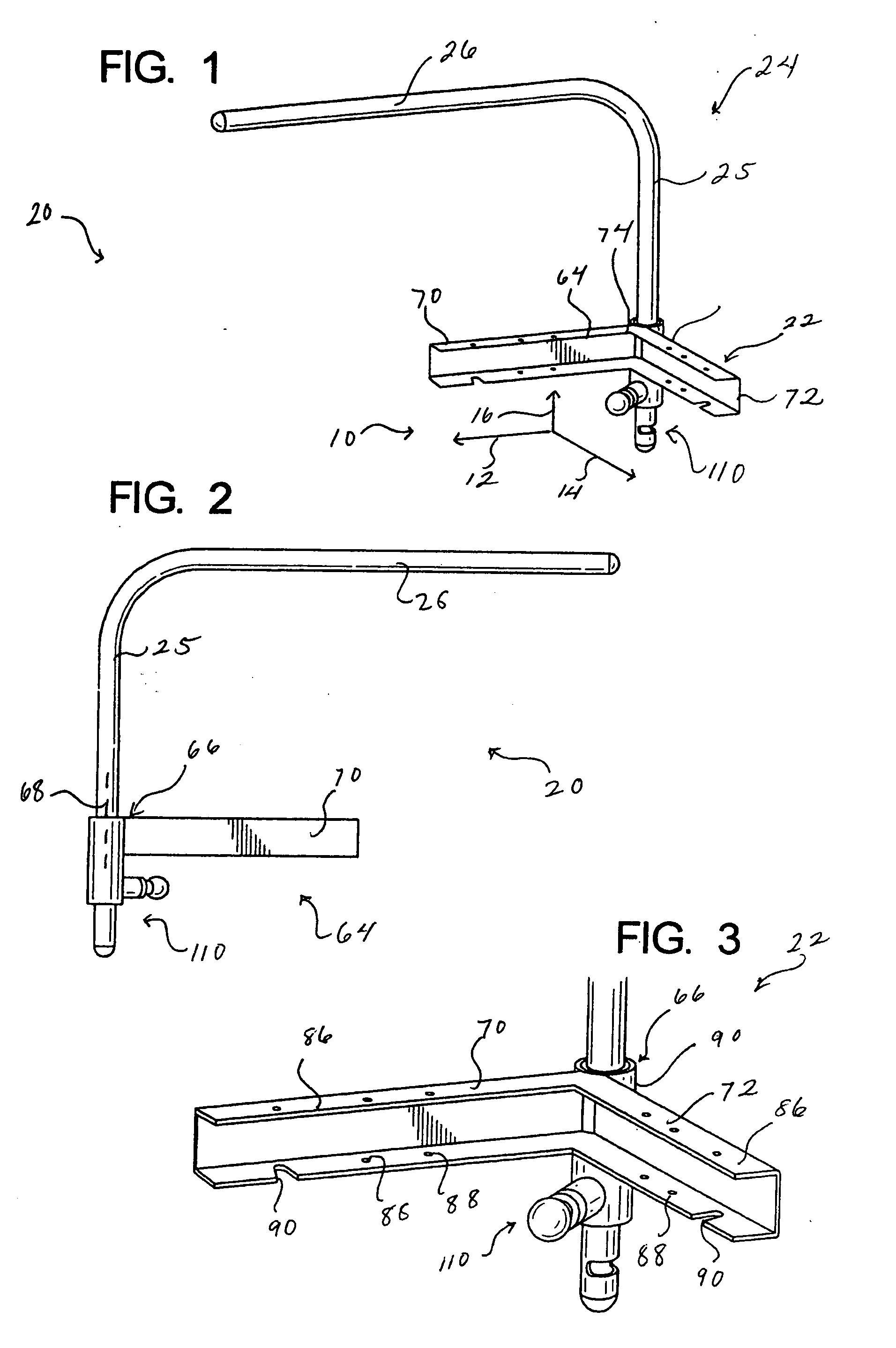Bed side rail method and apparatus
- Summary
- Abstract
- Description
- Claims
- Application Information
AI Technical Summary
Benefits of technology
Problems solved by technology
Method used
Image
Examples
Embodiment Construction
[0034] As shown in FIG. 1, the bedside support device 20 is shown in an isometric view in an assembled state not attached to a bed. To aid in the description, an axes system 10 is defined where the axis 12 indicates a longitudinal axis and the axis 14 indicates a lateral axis. Further, the axis substantially orthogonal to 12 and 14 is a vertical axis indicated at 16. The arrow indicating the lateral axis 14 points in a laterally inward direction where inward and outward are generally referenced from a longitudinal center region of the bed. The axis system is utilized to aid in the description of the various moving parts and orientation of components for a general direction and is not intended to limit the directional vectors to the exact orthogonal relationships shown in FIG. 1.
[0035] Briefly referring ahead now to FIG. 4 there will be a discussion of the overall environment of the bedside support device 20. As shown in FIGS. 4-7, the bedside support device 20 is adapted to be moun...
PUM
 Login to View More
Login to View More Abstract
Description
Claims
Application Information
 Login to View More
Login to View More - R&D
- Intellectual Property
- Life Sciences
- Materials
- Tech Scout
- Unparalleled Data Quality
- Higher Quality Content
- 60% Fewer Hallucinations
Browse by: Latest US Patents, China's latest patents, Technical Efficacy Thesaurus, Application Domain, Technology Topic, Popular Technical Reports.
© 2025 PatSnap. All rights reserved.Legal|Privacy policy|Modern Slavery Act Transparency Statement|Sitemap|About US| Contact US: help@patsnap.com



